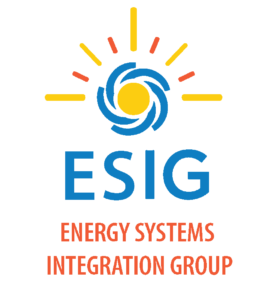The Federal Energy Regulatory Commission’s (FERC) Order 2222 has triggered a much-needed nationwide discourse on how to integrate distributed energy resources (DERs) into wholesale markets. At the same time, our efforts to value and compensate DERs for distribution-level benefits are barely scratching the surface, a gap that is severely constraining progress on decarbonization, resilience, and energy equity. (For the purpose of this conversation, “DERs” includes all types of generation, storage, and loads connected at distribution level on either side of the customer meter, including demand response and energy efficiency.)

Lorenzo Kristov, PhD
The Resilience Value of DERs
One DER valuation gap is about resilience. A major lesson of last February’s tragedy in Texas is that we should not depend solely on the grid to provide electric service under extreme (and no longer so rare) disruptions. Resilience in this context is a local attribute—it’s the ability to keep essential local functions operating when major disruptions occur. No matter how much we spend to improve grid resilience, the grid will sometimes fail. Electric service resilience means having electricity when the grid fails, at least for community shelters and critical functions whose failure can be disastrous for vulnerable people and communities.
With the rising severity of climate events, the resilience value of having grid-independent electric service is getting harder to dismiss, but so far there’s been very little progress toward enabling a commercial arena for fully realizing this value of DERs. Today there is no market framework for valuing and compensating the benefits DERs can provide to the system. Absent such a framework, DER and technology companies are focusing on the ”behind-the-meter market” for customers with the financial means to install DERs to provide cost-effective resilience and power quality. As grid costs continue to climb while DER costs decline and their functionalities increase, these customers will question the value of staying connected to the system. Their departure would eliminate any potential grid or society-wide benefits of those DERs.
Power System Benefits of DERs
The problem with “unstructured” DER growth is that investment decisions are based entirely on the needs and preferences of the customer, with no consideration of potential power system and societal benefits. That’s because the industry has not yet resolved how to value and compensate DERs for their benefits to the grid and to society at large. So by default, DERs are adopted based on their value to individual customers and, as FERC Order 2222 compliance proceeds, their potential earnings in the wholesale markets. One factor sustaining the DER valuation gap is the prevalent industry view that we should focus entirely on building major transmission lines to move bulk power around the continent, while dismissing DERs as offering negligible benefit toward decarbonization and being more of a problem than an asset for years to come.
And this points to another potentially large benefit of DERs—to flatten rooftop solar PV profiles and load profiles locally, on distribution, rather than export these as problems for the bulk system operator to manage. Recent modeling work by Vibrant Clean Energy co-optimizes capacity expansion planning of the whole power system, including both transmission and distribution, and estimates nearly $500 billion savings potential from evolving the power system in a bimodal fashion. One source of the savings is an increase in transmission capacity factors by flattening system peaks.
The famous California “duck curve” illustrates this potential benefit. Today, rooftop PV is about 40 percent of solar generation in the California Independent System Operator system, almost 10 GW in a 50 GW peak system, so it makes a hefty contribution to the duck curve. Using DERs to flatten the “ducklings” on high-PV distribution circuits can reduce the severity of the system net load profile, increase capacity factors and reduce congestion on both distribution and transmission, and integrate higher levels of utility-scale renewables. But today this potential value of DERs is rarely even acknowledged, much less compensated.
A DER Valuation and Compensation Framework
Where does the industry need to go to realize the greatest benefits of DERs for customers and communities, for the power system as a whole, and for the larger societal goals? We need a DER valuation and compensation framework that will:
-
- Enable customers to optimize their mix of on-site equipment and grid kWh to obtain electric service that cost-effectively meets their needs and preferences for resilience, power quality, environmental attributes, and other criteria, while providing meaningful benefits to stay connected rather than defect from the system;
- Enable communities to plan and implement local energy projects that will protect their residents when the grid fails and provide local clean energy and economic benefits under blue skies; and
- Foster the transition of distribution utilities to 21st century distribution system operators whose role includes coordinating the activities of diverse DER owners and operators to deliver relatively flat net-load profiles and ancillary services to the bulk system at each transmission-distribution interface.
The benefits of such an approach can be the basis for valuing and compensating DERs, which in turn can transition the distribution side of the power system to a fully functional partner to the bulk system, enabling the whole system to deliver on our urgent goals of decarbonization, resilience, and energy equity.
Lorenzo Kristov, PhD
Independent consultant, electricity system policy, structure and market design.

Excellent explanation of the value of DERs… turning on its head the notion that they are a problem, versus being a solution.
Reducing the cost associated with VOLL ( value of lost load) is a key “off bill” benefit of DER. Grid integration of DER in a way that optimizes benefit to utilities through hosting maps is a way to target DER deployment in a planned and purposeful way. Alas, the resistance of utilities to DER, unless forced through public policy, is creating the exact grid defection that utilities fear…
Great article and info.
Concise insight and understandable guidance – thanks Lorenzo
• provide meaningful benefits to stay connected
• implement local energy projects that will protect their residents when the grid fails
• coordinate the activities of diverse DER owners and operators to deliver relatively flat net-load profiles and ancillary services to the bulk system at each transmission-distribution interface
Thanks for your comment, Kelly.
Great post Lorenzo!
Your point about flattening the duck curve is well taken. If the utilities were to strategically locate smaller battery installations at substations rather than going for huge, 100+ MW sized installations like Moss Landing, some of the additional rooftop solar could be stored for the late afternoon and evening hours during the neck and head of the duck, and to service load from EV charging overnight. This would also enable more rooftop solar deployment, reducing the need for large utility scale solar deployments in uninhabited areas. Such large utility scale deployments result in habitat destruction and are increasingly causing political opposition among rural residents, as has recently occurred for wind installations in Wyoming. But the utilities and the regulators have yet to see the value of co-ordinating DERs deployments with utility investments in infrastructure.
Thank you Lorenzo